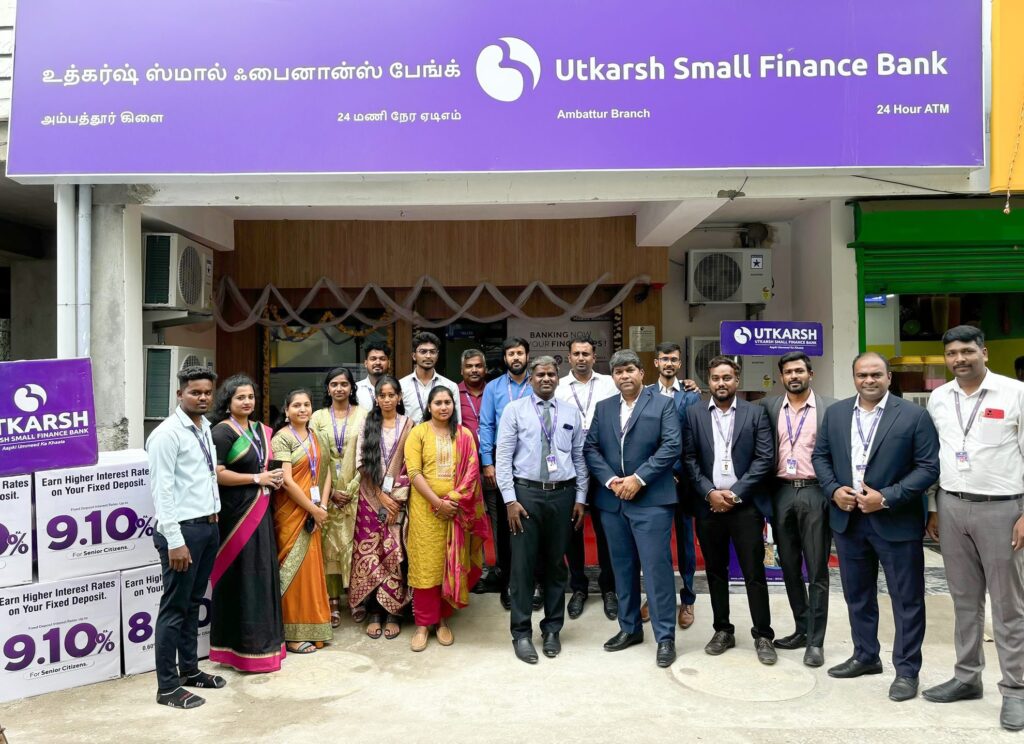1. At a Glance
Utkarsh Small Finance Bank (USFB) – the once-celebrated microfinance Cinderella that turned into a full-fledged small finance bank in 2016 – is now knee-deep in a financial soap opera. As of November 2025, the bank trades at₹16.2/share, painfully close to its 52-week low of ₹15.3, after erasing47% of shareholder wealth in just one year. The market cap stands at₹2,883 crore, while the losses are doing push-ups at₹348 crore for Q2 FY26and a staggering₹753 crore loss for FY25.
ROE? Just0.79%– that’s less “return on equity” and more “return on empathy.”Gross NPAs shot up like Diwali rockets from2.51% in FY24to12.4% in Sep 2025, and net NPAs now hover around5.0%, the highest among small finance peers.
Even the bank’sCASA ratio of 18%is gasping for breath compared to peers like AU and Ujjivan with >30%. Withcost-to-income ratioballooning to59.8%, andNIMslipping to8.6%, the “inclusive growth” story suddenly feels more like “inclusive headache.”
2. Introduction
Ah, Utkarsh SFB – the bank that started with a noble mission to bring financial inclusion to the last mile, and somehow managed to include itself in the red-ink club.
Founded in Varanasi (yes, the Prime Minister’s backyard), Utkarsh rode the microfinance wave like a Bollywood hero in the 2010s – small-ticket loans, women borrowers, rural outreach, the works. But 2025? The script flipped.
From empowering borrowers to struggling withmultiple-loan defaults, Utkarsh’s Bihar and UP base turned into its biggest liability. The bank’s exposure concentration –70% of loans from just Bihar and Uttar Pradesh– means one bad monsoon or a political stunt can send the books straight into ICU.
Its management is now firefighting like a cricket team defending 50 runs in 20 overs. Fundraising plans of₹750 crore via QIP or preferential issuesin February 2025, followed by a₹950 crore rights issue in Oct–Nov 2025, are desperate but necessary band-aids to stop the capital hemorrhage.
Still, one must give credit (pun intended): Utkarsh has survived seven years of regulation, rural chaos, and RBI compliance – that itself deserves a slow clap.
3. Business Model – WTF Do They Even Do?
Utkarsh SFB runs on a hybrid model ofmicro-lending + retail + wholesale + housing finance. In English: they lend small loans to women, medium loans to shopkeepers, and large loans to corporates – basically anyone with a heartbeat.
TheirJoint Liability Group (JLG)model is the core – small, collateral-free loans to groups of women for income generation. Great in theory. In practice? When half the group defaults, everyone defaults.
As ofDec 2024, theirAUM stood at ₹19,057 crore:
- Micro-banking loans(JLG + individual): 49% of AUM
- Retail loans(secured & unsecured): 18%
- Wholesale lending: 11%
- Housing loans: 5%
- Commercial vehicle/construction equipment loans: 6%
- Others: 7%
The liability side looks more disciplined:Retail term deposits (50%)lead the show, followed byInstitutional deposits (30%), while CASA still lags at 18%.
But remember: while AU, Ujjivan, and Equitas diversified across India, Utkarsh chose to stay loyal to Bihar and UP – the same way a Titanic passenger stayed loyal to the deck.
4. Financials Overview
| Metric (₹ Cr) | Q2 FY26 | Q2 FY25 | Q1 FY26 | YoY % | QoQ % |
|---|---|---|---|---|---|
| Revenue | 840 | 987 | 881 | -14.9% | -4.7% |
| EBITDA (Fin. Profit) | -562 | -35 | -457 | -1,505% | -23.0% |
| PAT | -348 | 51 | -239 | -782% | -45.6% |
| EPS (₹) | -1.96 | 0.29 | -1.35 | — | — |
Witty commentary:Revenue is shrinking faster than a wet kurta in winter. Profit has turned into a black hole, sucking everything around it –
including investor morale. EPS? Let’s just say “P/E not meaningful” because who calculates P/E on negative earnings unless they enjoy pain.
5. Valuation Discussion – Fair Value Range Only
Let’s attempt the impossible: valuing a loss-making bank.
Method 1: P/E MethodEPS (TTM): -₹4.23 → P/E not meaningful.No P/E, no valuation. Moving on.
Method 2: P/B Method (since banks are asset-heavy)Current Price = ₹16.2Book Value = ₹13.2→P/B = 1.23x
Comparable peers trade at:
- AU Small Finance Bank – 3.8x
- Ujjivan SFB – 2.0x
- Jana SFB – 1.6x
- Equitas SFB – 1.7x
Given the red-flag NPAs and losses, areasonable P/B range: 0.8x–1.2x.That pegs thefair value rangebetween₹10.5–₹16.0/share.
Method 3: EV/EBITDAEV = ₹25,014 Cr, EBITDA (TTM) = ₹878 Cr →EV/EBITDA = 28.5x.Peers hover around 12–15x.So, the market still prices in hope, not performance.
Disclaimer:This fair value range is foreducational purposes onlyandnot investment advice. If you buy because you read this, may your portfolio recover faster than Utkarsh’s NPAs.
6. What’s Cooking – News, Triggers, Drama
Oh boy, where to start?
- November 2025:Announced₹950 crore rights issueat ₹14/share (8:13 ratio).
- November 14, 2025:DeclaredQ2 loss of ₹348 crore, gross NPA of 12.4%, and granted3.10 crore ESOPs. Because why not reward employees while shareholders drown?
- Virender Sharmaappointed to senior management – someone had to steer the ship.
- February 2025:Board approved raising₹750 crorevia equity (QIP/preferential issue).
- March 2025:Gross NPA 9.4%, Net NPA 4.8%.
- By September 2025:Those NPAs ballooned to12.4% and 5.0%respectively.
Investor reaction? Think of a crowded train when someone yells “cockroach.”
Meanwhile, the management insists this is “a one-time blip due to regional stress.” But with 70% exposure in Bihar and

